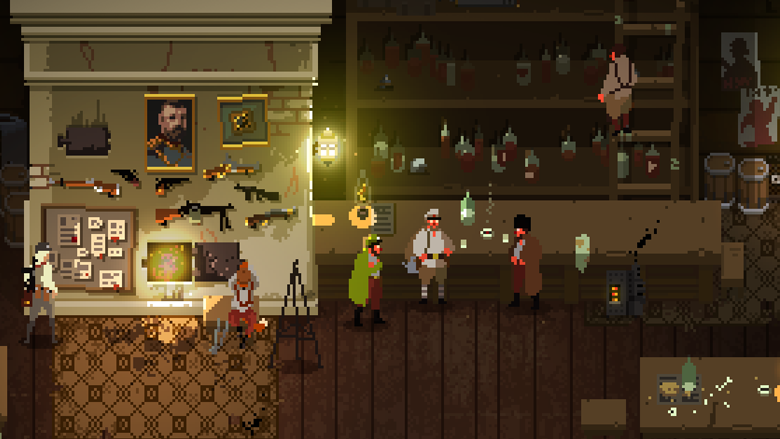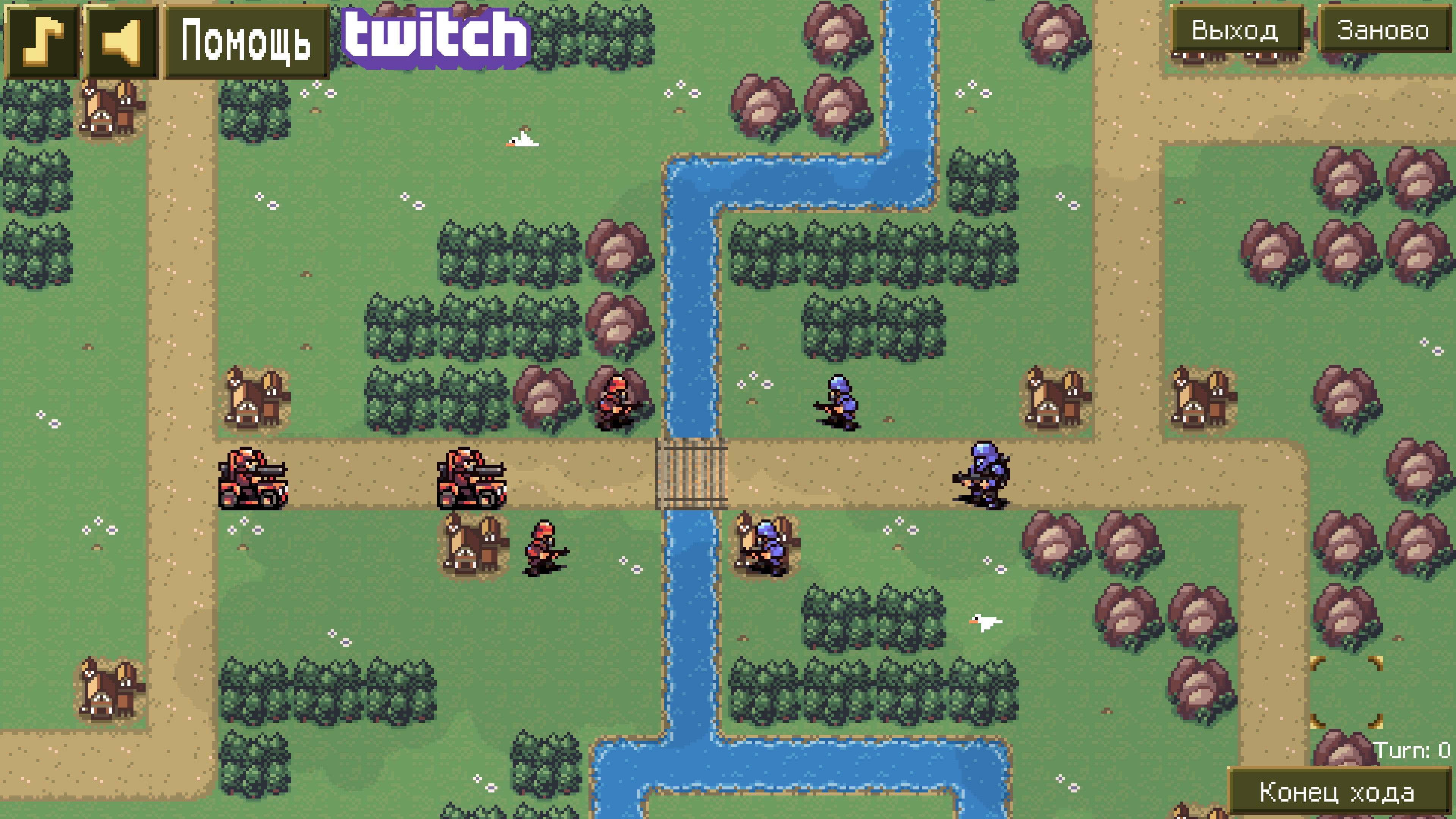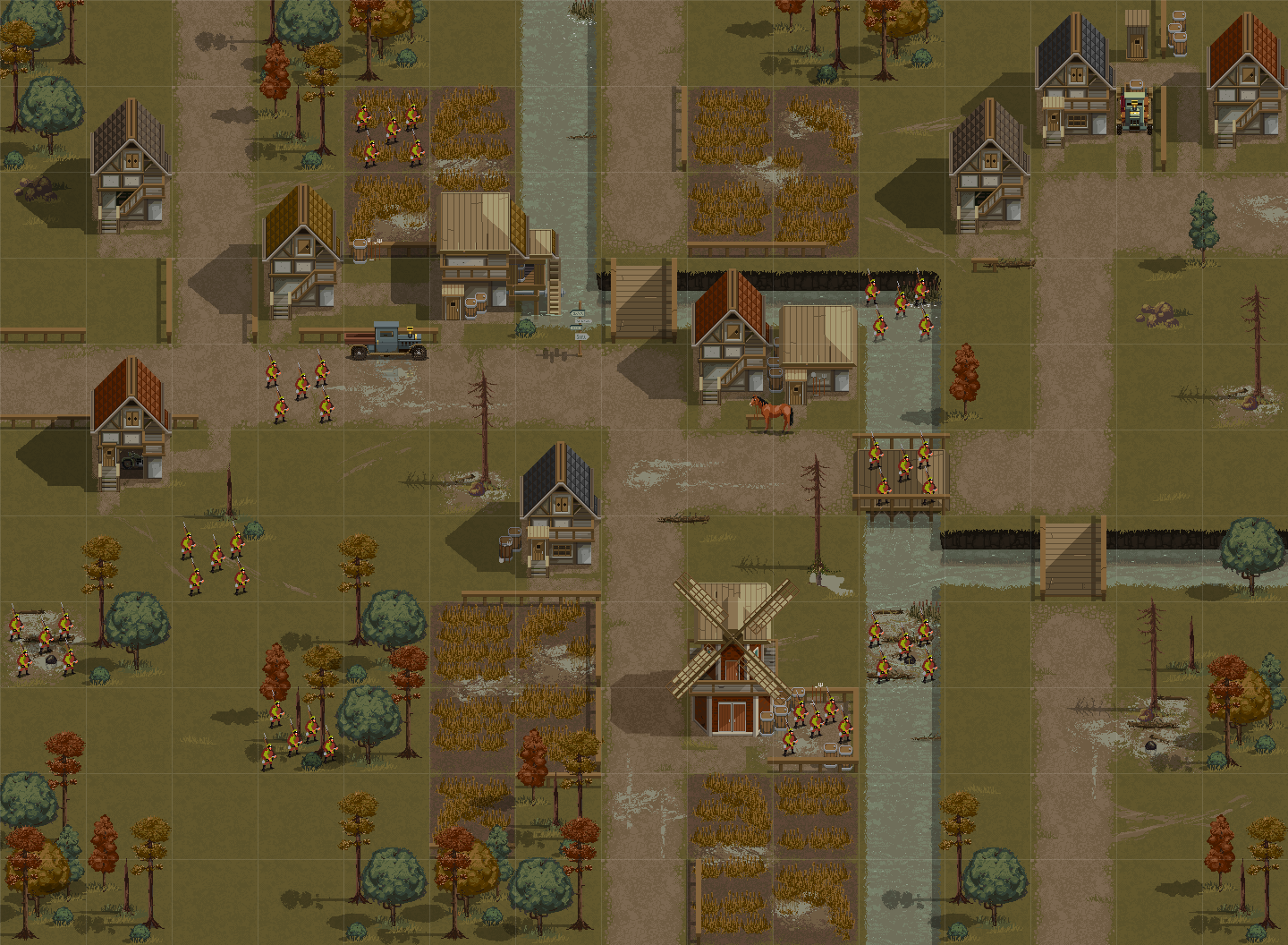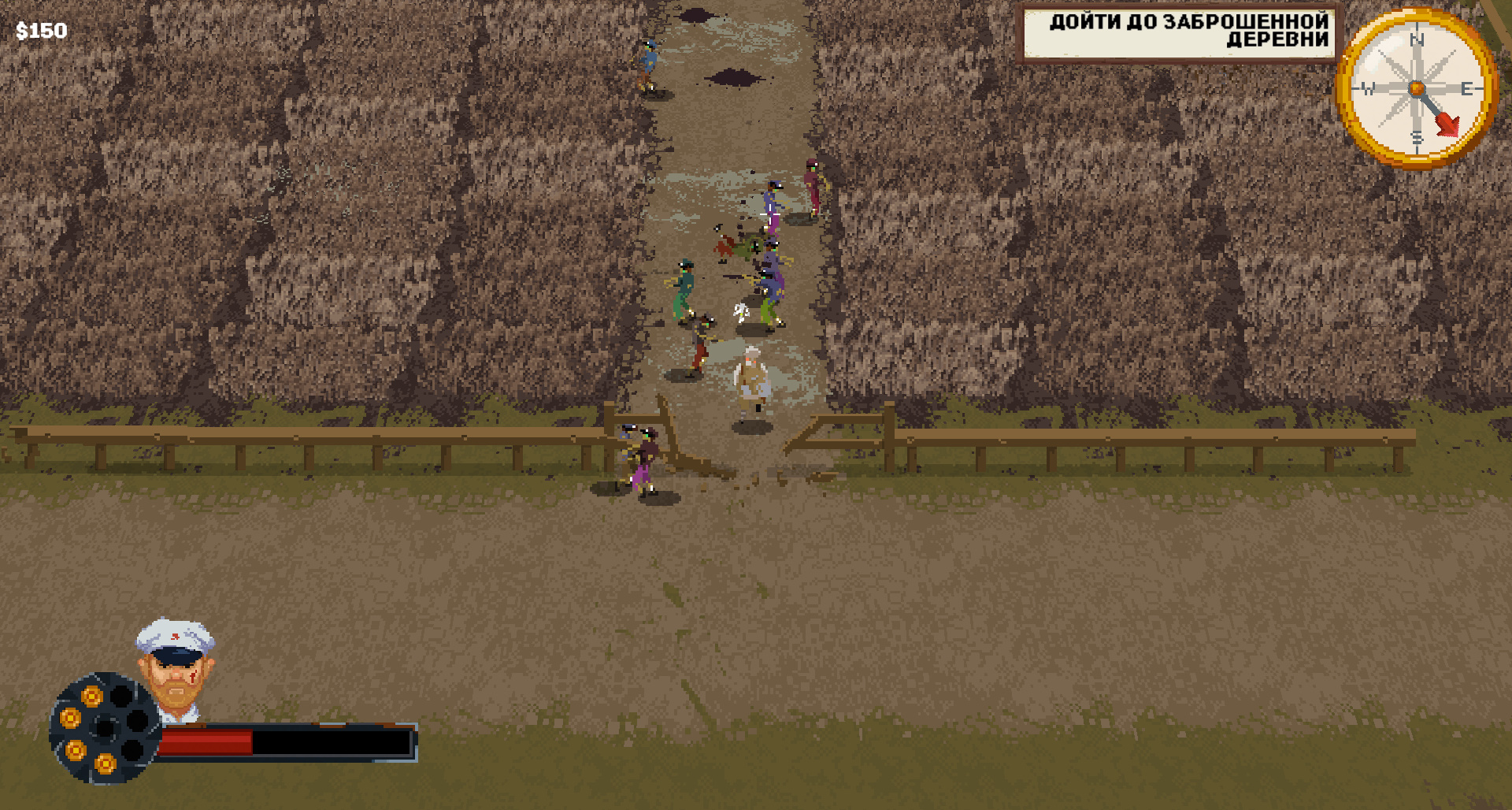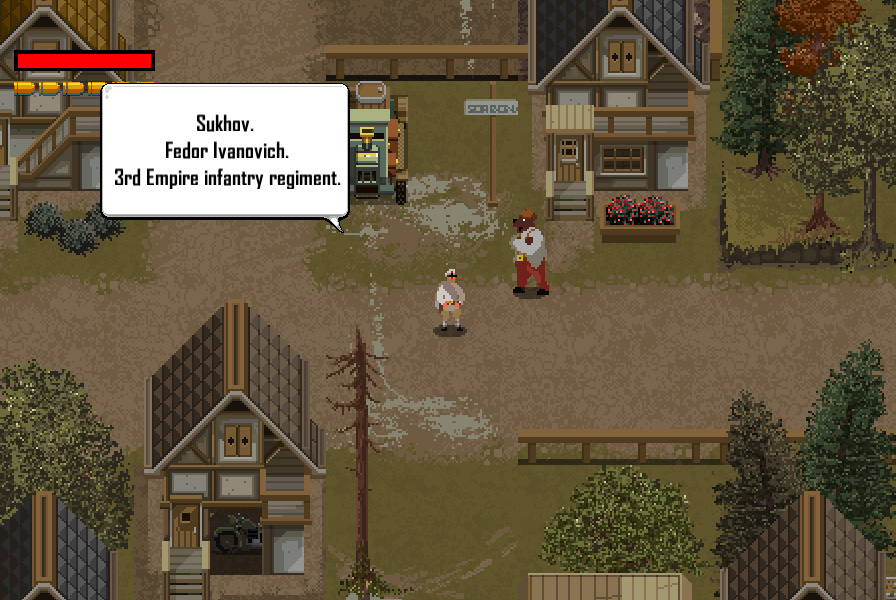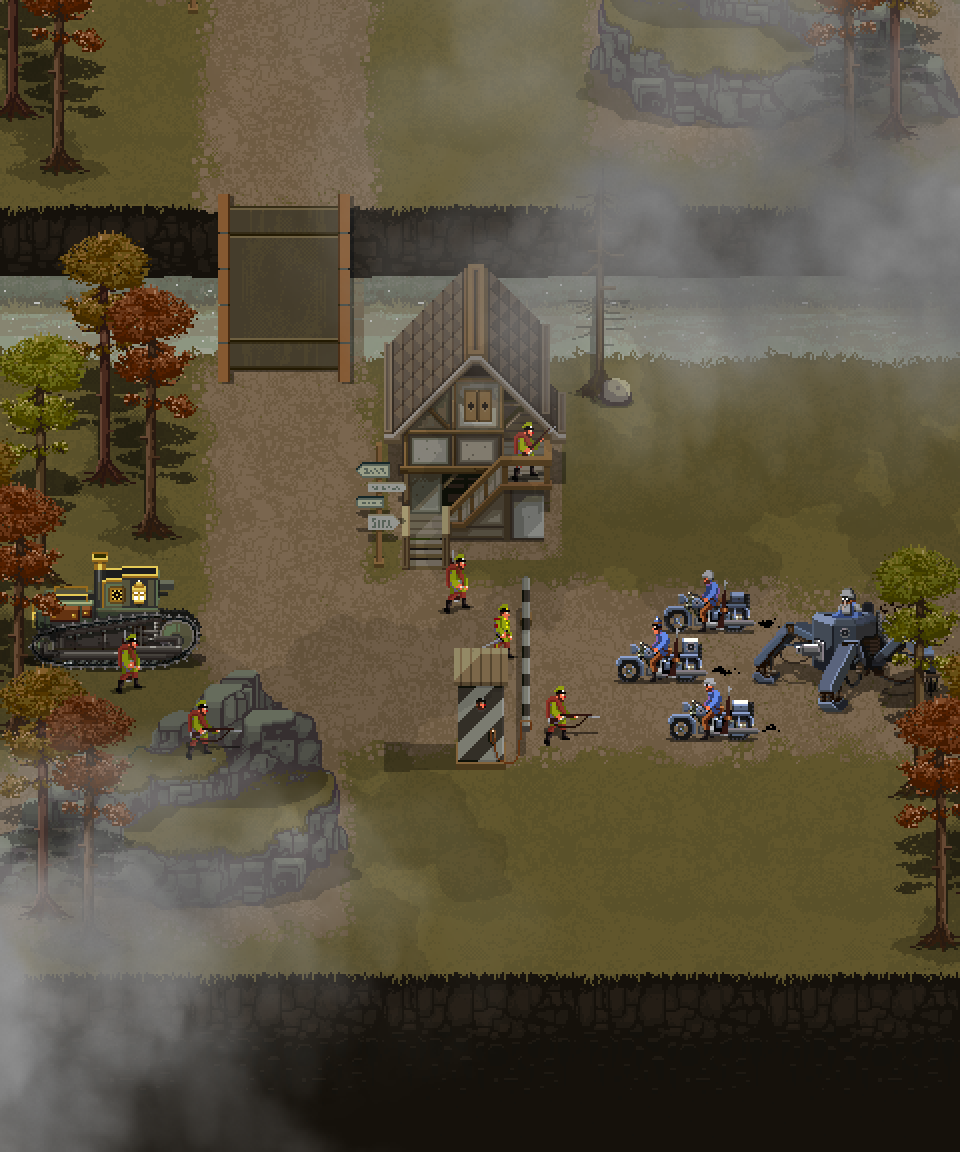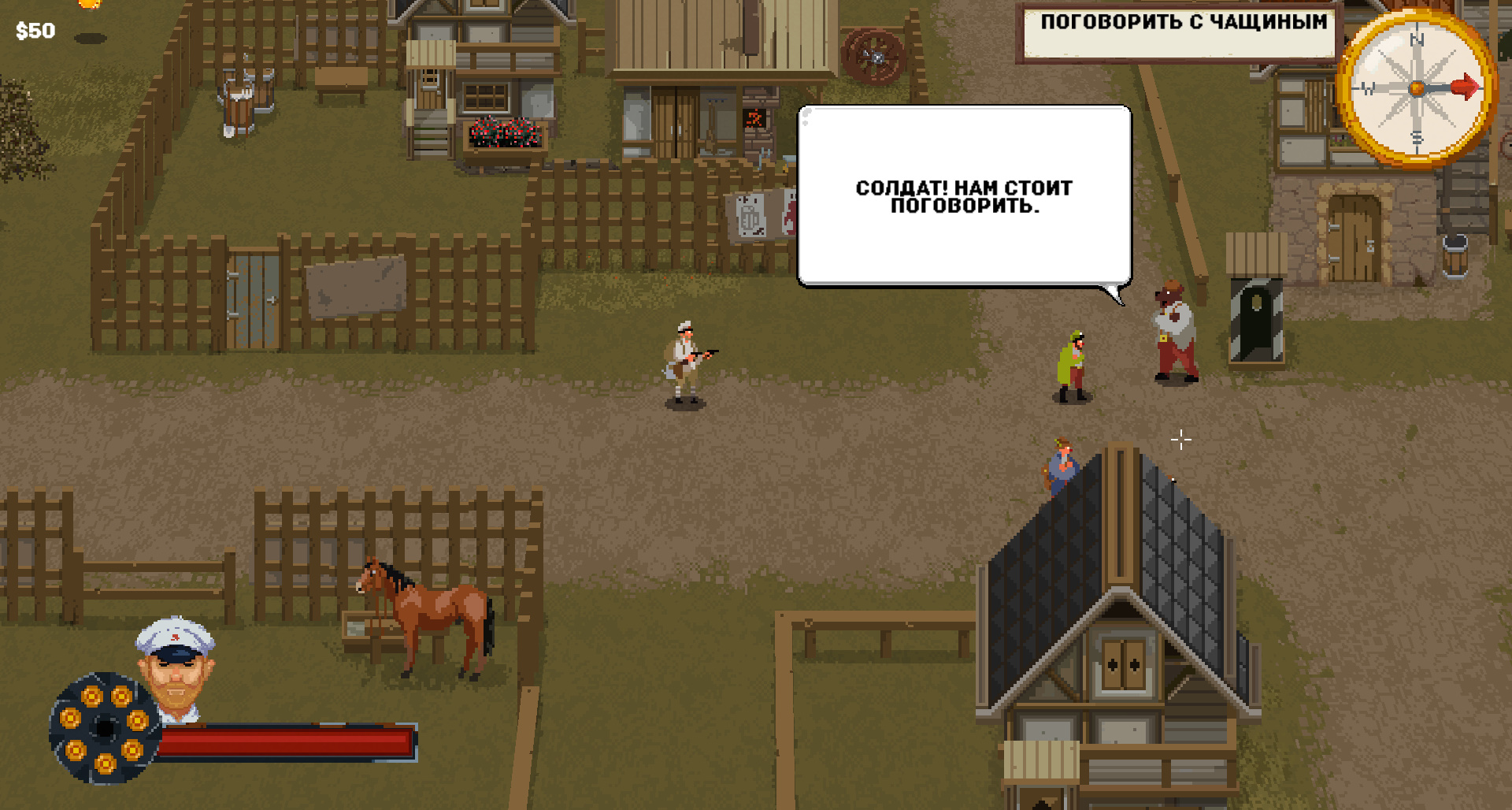One of the main third-party projects based on Defold today remains the isometric cooperative shooter SMASH BASH: Date with the Desert, developed by the indie studio Rising Wave. We talked about the history of the project, engines and difficulties in developing turn-based tactics and action games with the project producer Yaroslav Kravtsov.
Hello. I’ll start a little from afar. You are well known as a leading level designer of MMO projects Mail.ru Group. You’ve worked on Allods Online, Skyforge and Armored Warfare. These are large-scale games, completely different from the ones you are doing today. How much does the approach to design in big games differ from the approach to design in indie products?
Yaroslav Kravtsov
Hi! The main difference is that there are more design tasks on large projects. If on a small indie project everything can be kept in the head of one designer, then on big games you need to be able to distribute tasks between a team of game designers, and then bring the result into a single product. It’s very easy to lose the vision of the game and acquire unnecessary features.
The second significant difference is the business approach. In an indie team, expenses mostly consist of the development team itself, possibly without office expenses. Large companies, in addition to the costs of development itself, are overgrown with associated costs for office, HR, accounting, security, cleaning, legal services, marketing, operating, and investors also need to be pleased with dividends. As a result, it turns out that the company simply has no option to make a game that will not be aimed at making very large profits.
This is directly reflected in the work of designers. It becomes necessary to look at marketing research, analytics metrics, conduct A/B tests and, most likely, work with freeplay monetization. It’s not difficult to get to the idea that the game is a means of monetization of traffic. Usually at this point, the designer signs a contract for the sale of the soul and opens a bottle of expensive whiskey.
The story of SMASH BASH began in February 2016. Then it was about developing turn-based tactics on Unity within the framework of Games Jam Kanobu. The game was conceived as Advance Wars in the setting of the First World War. From the outside, everything seemed simple: take the mechanics, draw your own graphics. Where did the pitfalls arise?
First we made a prototype using the simplest possible graphics, in the style of the original game. Everything went pretty smoothly and I’m happy with the result that we got during the month of development in the evenings.
The first prototype of SMASH BASH
But it was necessary to move on. The game looked very generic and the screenshots almost did not differ from the reference game. We decided to make the art more complex: we increased the resolution, made realistic proportions, added more details related to the era of the First World War.
Our community of players supported this choice, but the developers, on the contrary, spoke in favor of minimalistic graphics, as easy and convenient to produce. But we understood that we were selling the game to players, not developers, so we listened to our community.
An example on which the SMASH BASH art style was chosen
But after that, the problems that the developers warned us about came up. Firstly, the positioning of units relative to landscape elements has become more complicated.
The tank could no longer drive into the house. The infantry from one unit turned into a team of five soldiers and everyone needed the right positioning when the infantry climbs a mountain, enters a forest or occupies a house. When the equipment enters the forest, it is necessary to correctly add the sprite of the equipment between the layers of the forest so that it looks natural.
New version of SMASH BASH graphics
Secondly, all units needed additional animations of movement and shooting up and down. As long as everything was cartoon-like, there was no problem moving sideways. But as soon as we gave a taste of realism, so immediately the bar of requirements for what is happening on the screen soared. But we did not back down, because although it is more difficult, but it is more in demand.
However, the most difficult thing was that the game design of the game began to change. Tanks can’t be treated by hitting a house – it’s not realistic. The infantry must attack not only the neighboring cell, but also shoot further, and this is again not realistic. Planes can’t hang in the air. It is expected that the artillery will fire through half a map. In general, there were many difficult questions that led us further and further away from the original concept of casual tactics.
Why did you stop at pixel art in general?
With pixel art, everything is simple. The development of the game began with the fact that I wrote a page of text and attached a screenshot from Advance Wars as a reference. It was enough for people to start coming and saying they want to make this game with me. Among them came Yevgeny Yudin, a well-known pixel artist in indie circles. He has a very interesting approach to pixel art, which makes the picture unique, different from thousands of other pixel art games. So it wasn’t me who chose our art style, but the art style chose our game.
And although the basics of the style settled down before switching to SMASH BASH: Date with the Desert, but the picture itself has changed significantly since that time. We are constantly looking for ways to make it more attractive. To make it interesting to watch what is happening on the screen at any moment of the game. Participation in showcases at conferences helps us in this. We look at how people react to our game and draw conclusions. We also use social networks, where we post fragments of gameplay, and look at the reaction. If something was met coolly, then we change and check the reaction again.
And our team also likes difficult challenges. One day, a link appeared in the development chat to how the 3D mode was made in Diablo 2. Offtop. But a few days later, the programmer, Viktor Smirnov, posted a gif in the chat, where he showed how this mode works in our game. And we screamed!
SMASH BASH: Date with the Desert
Continuing the conversation about art. Is it relevant today, speaking about pixel art, to say that this approach to graphics in production is less labor-intensive (and therefore cheaper) than, for example, working with sprites made in a different style, or working with 3D? In other words, is this approach still popular with indies because of cheapness or for some other reason?
I would prefer to refer here to the report of our artist, when he answered this question in a very detailed way at the DevGAMM conference. But in short, pixel art can be different. Good squeak art is similar in complexity to work in other styles and 3D. If a developer wants to do something more than a blunder craft, then he should think three times before choosing pixel art. It imposes many restrictions that are not present when working with ordinary 2D art.
After finishing work on Date with the Desert, do you plan to finish SMASH BASH in the same style?
I think by the time we finish Date with the Desert, we will learn a lot about our capabilities and this will help us make the right decisions. Including which project we should do next. I have already said that there are a number of serious gameplay problems with tactics. On the other hand, I really want to show the very world war for which this whole setting of steampunk, dieselpunk, teslapunk and himpunk arose. And through an alternative history to once again show the horrors of the war that was a hundred years ago, but was in the shadow of the Second World War. Such events should not be forgotten.
How did it happen that while working on turn–based tactics, you took up the creation of an action game – SMASH BASH: Date with the Desert?
At some point, our artist, Yevgeny Yudin, watched the trailer of the film about Wonder Woman, which also takes place in the era of the First World War. He made a character concept and, for example, inserted a SMASH BASH on the location. As soon as we saw a character with a sword, we immediately had a picture of a dynamic game in our head, where we control one character, run around the map and mow down enemies in packs. At the same time using those assets that have already been made.
The time has just come for the next Ludum Dare and we decided, as an experiment, to implement this idea in the form of a small game made in three days. These are not months of experiments, so it was possible to take a chance. At the same time, a reason to try the Defold engine in combat conditions. We walked around him in circles for a long time, but still could not decide on our relationship to him. Tutorials to do, of course, is a good topic, but for unambiguous conclusions, you need to solve real combat tasks on the engine. As a result, we made this game.
SMASH BASH: Sukhov vs Zombies
We liked the result and decided to continue. In addition, this game removed those problems that we did not know how to solve in tactics:
- How to make the game suitable for YouTuber streamers (viewers will die of boredom watching the streamer think about the next move, because nothing happens on the screen at this time)?
- How to make short game sessions (in the reference Advance Wars level, you could spend 20-30 minutes on passing, which does not fit at all with modern requirements for the duration of the session on mobile devices)?
- How do I make the game suitable for free-play monetization? The gameplay of tactics implies the absence of randomness and the influence of progression. It’s like chess, where you can think several moves ahead, because it’s guaranteed that the pawn will take out the bishop in one attack, and not in 2-4. But the mobile market is very unfriendly to paid games, if they are not world-famous hits. Therefore, I do not want to tie my hands in advance, making a game that obviously may not pay off.
But the last straw that put the tactics of SMASH BASH on the shelf was the release of other games in the genre of “nostalgia for Advance Wars”. At a minimum, these are Warbits and Lost Frontier. Both games are made of very high quality, but, according to estimates, they have rather modest sales results. We can also note the failure of the Tiny Metal kickstarter. All this suggests that the idea of making tactics is not as good as it seemed at first.
I think we’ll come back to tactics, because so far the genre of casual tactics is indecently empty. But clearly on a larger scale than previously thought, since it will be necessary to jump over the bar that the games listed above could not take.
By the way, given the not-so-good story with two-dimensional graphics for Unity, why, when they started making the original SMASH BASH, they stopped at it, and not, for example, at a 2D GameMaker sharpened?
I had experience working with GameMaker, even one released game for Android. I won’t give you the link – I’m ashamed of it. My experience at GameMaker has shown me that the engine has a very low ceiling, which you quickly run into when you want to do something more complicated than a platformer prototype.
I was also very upset that the engine updates were breaking the game. Somehow I had to make a very tiny patch to my game. But the update completely broke the entire monetization system. And instead of a small update, I had to re-integrate monetization and test it thoroughly.
It’s very unprofessional when the engine allows itself such tricks. At Skyforge, we had our own engine, which was being worked on all the time the game was being developed. There was a rule that if you make a new feature that breaks the game, for example, due to the transition to a new data format, then you are still working on migrating the project for it so that development does not stop for a day.
Although Unity also had complaints about 2D graphics, but the portfolio of released games on this engine was reassuring. If others could, then so can we. And if we can’t, we know who to ask.
SMASH BASH
SMASH BASH: Date with the Desert is created on Defold. I’m sure the transition to the new engine was not painless. What were you angry about and what did you get used to at first when working with Defold? And what should those developers who switch to it from the same Unity (and in general they should switch) prepare for?
Yes, the transition was not painless. Especially at first, even before the experiment on Ludum Dare, when we tried to transfer the tactics gameplay to Defold. Trying to do something complicated on the engine right away, when there is still so little information on it, was a problem. It turned out to be easier to create a game from scratch, since we complicate it with small steps, each of which is clear how to do.
I don’t think developers who already have a Unity project should think about changing the engine. Changing the engine during development is always a very, very negative step, which should be taken only as a last resort. We switched to Defold because we started a new project. If they had continued to do tactics, they would most likely have experimented a little with Defold to evaluate the novelty on the market, but would have continued development on Unity.
There is no fundamental difference between the engines, for which it is worth migrating and risking the project. Both engines are well suited for 2D games. Unity has a large community and many ready-made solutions, Defold has higher speed and smaller application size, which is important for mobile development.
If the developers decided to start a new project on Defold, then I would advise first of all to join the community of developers on this engine: look at the engine forum, slack chat and the VK group. At this stage in the development of the engine, it is easier to ask colleagues than to try to find the answer yourself.
A great opportunity to minimize risks is to start a project on a new course on creating games on Defold, which starts in January at Scream School. It will not be a set of tedious lectures with an exam at the end, as is customary in classical education. Instead, there will be a long workshop where the basic elements of creating games on Defold will be analyzed step by step, and students will not do a standard educational project, but implement their own ideas. The course will be taught by me and Viktor Smirnov, our programmer. For me, I don’t know what kind of mastered engine it is, and I have enough experience in developing games of any caliber. And Vitya has mastered the bowels of Defold so much that he has already made VR support for our game. Since then, we have stopped joking that there is something missing in Defold.
SMASH BASH: Date with the Desert
What surprises did you encounter when developing Date with the Desert? And, in general, can you tell us what the team should prepare for, which decided to file its first project exactly as an isometric shooter?
At its core, a shooter is one of the simplest genres to implement. You write code that moves your character up and down, right and left. You write a code that, when pressed, releases a bullet object in the direction of the cursor. You write code that, when a bullet collides with an enemy object, destroys both. You write a code that moves the enemy in the direction of the player’s object and, when colliding with it, destroys both. Everything. The prototype of the shooter is ready. We make art, different enemies (speed, number of hp), different weapons (rate of fire, accuracy, damag) and you can release your Crimsonland.
Difficulties begin when you realize that a regular shooter looks boring and does not cause a stir, that you need to work on shooting effects, AI opponents, add visual chips, do meta-gameplay, collect large interesting locations, add unique gameplay features.
I will separately highlight the problem of management for mobile devices. We are still making a game for PC, but in the future we want to enter the mobile market. What we are already thinking about. The peculiarity of control on touch devices is that the player cannot be required to shoot accurately. If we can do gameplay about headshots and a piece number of cartridges for a keyboard with a mouse, then on touch devices we need to lay down in advance that the player will aim very badly on his own.
And the last question: when to wait for the game?
I hope that in the first quarter of next year we will go into early access. The game assumes a large amount of procedural content, which will require mass testing before being released. I don’t want to delay the development of the game. We are too small a studio to do a long-term construction. But I don’t subscribe to these deadlines. We don’t have a publisher yet, and maybe when we find one, the plans will change. With additional funding, I would invest in making the game look expensive and rich and gather a much larger audience.
Good luck! Thanks for the interview!

